Baby Sleep 101-Where to Start When You’re Overwhelmed
So seeing as this website and blog is all about children and their sleep, I figured it’s best to start at the beginning when talking about sleep. 😉 This is “Baby Sleep 101”; giving you the foundations of healthy sleep for your child.
If your child isn’t sleeping, it means YOU aren’t sleeping. You’re tired. They’re tired. So how do you go about solving your child’s sleep issues?
“Let’s start at the very beginning
A very good place to start
When you read you begin with A-B-C
When you sing you begin with do-re-mi ”
-Do-Re-Mi from the Sound of Music
The Fundamentals
You first need to know the basics of healthy sleep habits. It doesn’t matter how old your child is-they need sleep. But they do have different requirements in terms of how much and when. If you want more detailed information per month, check out our sleep tips by age breakdown on our resource page.
The fundamentals of healthy sleep can be narrowed down to 6 key elements.
- Age appropriate wake times
- Consistent wind down routine
- Consistent nap schedule
- Consistent sleeping location
- Self soothing skills
- Age appropriate bedtime
If you’re having sleep troubles with your baby, it is very likely that one or more of these key elements are missing. You may think that everything is in place, but chances are, something isn’t. It really helps to keep track of your child’s routine because we can forget small details from day-to-day, especially when we’re living on limited sleep. So, start by taking notes of your baby’s routine for 3 days and then look back to see where problems are arising.
Look at the Info to Decide What Needs to Change
Age Appropriate Wake Times
Is your baby sometimes up for 3 hours in the morning and other times only for 1.5 hours? Is your 2 year old napping at 12pm on weekends, and 2pm on the week days?Then you need to fix their wake times and nap routine. If you’re not sure how or where, then err on the side of caution and keep wake times on the shorter side.
In general, babies who are on 2 or 3 nap routines need a shorter morning wake period, often around 2 hours and then a slightly longer wake period later on.
Toddlers and preschoolers doing one nap a day, may have their nap mid day, or even a longer morning period and a shorter afternoon wake period.
Consistent Wind Down Routines
One of the basics of baby sleep 101 is to have a wind down routine for your child. Look at how you prepare your child for naps and bedtime-is there a consistent wind down routine that signals them that it’s time to sleep? If not, then they may be too overstimulated to settle down and fall asleep. Keep the wind down routine calm, simple and soothing.
Nap Routines
If you are frequently on the go and your baby is taking many naps in the car, then you need to adjust that as best as you can. Of course there are going to be naps here and there in the car seat or stroller, but overall we need to make sure that the majority of naps and bedtime are in the same, consistent location.
The most restorative kind of sleep is non moving and lying down on a flat surface. Non moving means non moving so remember to switch off those vibrating bassinets too. 🙂
Children crave routine and their bodies respond wonderfully to it. Not only does it benefit them to have most naps motionless, doing them about the same time each day also helps.
Falling Asleep Unassisted
Another important component to healthy sleep is the ability to fall asleep independently. (Please note, I’m not talking about newborns here-falling asleep unassisted is a learnt skill and I don’t advocate formal sleep training until at least 4 months of age, so please keep your expectations realistic.) If your baby only naps for 45 minutes and then wakes but is tired and wanting more sleep, it could be time for them to start learning self soothing skills. The same idea applies to the 3 year old that keeps coming into your room during the middle of the night or needs you to stay with them until they are completely asleep.
There are many different ways to accomplish this, from gradual to more direct. I cover all the options in the Sleep Training Series.
It’s All About the Bedtime
How about bedtime? If bedtime fluctuates anywhere from 7 to 10 pm, then your baby is likely going to bed too late (most do best with a bedtime between 6-8pm) and becoming over tired which leads to resisting bedtime, increased night wakings and early risings (5:30am or earlier).
Keep your child’s bedtime age appropriate and understand that crankiness/fussing/getting hyper/crying can all be signs that they are tired and need more sleep, regardless of the age.
Not sure when to put your little one to sleep?
Use this as a rough guideline;
0-3 Months 1-2 hours after last nap
3-6 Months 2-2.5 hours after last nap
6-9 Months 2.5-3.5 hours after last nap
9-12 Months 3.5-4 hours after last nap
Moving bedtime up earlier for a few days can help to reverse the symptoms of cumulative sleep loss. Moving bedtime up for a few months will keep them from falling into a sleep debt again.
Consistency Matters-Consistently!
Consistency is also extremely important. I can’t stress this enough! You may have all of the key elements in place, but only on the weekends. This isn’t consistent. Consistency means day in and day out. It may be boring, but it sure is restful. 😉
Babies don’t need a lot of variety-they actually crave consistency and it’s up to us as parents and caregivers to provide it for them when talking about sleep. Consistency in routine and sleep times lead to healthy sleep. We wouldn’t deprive our children of quality food because we know that good nutrition is a building block for healthy growth and development. So we need to also be just as mindful to the kind of sleep we provide.
Fix What’s Broke
Once you know where the problems are stemming from, it’s time to make a plan and take action. This can be where the really hard work starts (but I know you can do it!).
It’s one thing to be tired and up with your child frequently through the night, but it’s quite another to make a plan and stick to it night after night and not go back to what you were doing before.
Let’s say you were rocking your child every few hours at night. Yes, you were up, but chances are, both of you were at least falling back asleep relatively quickly. But if you are now trying to sleep train and not rock, then your child will probably be up for much longer stretches of time as they learn a new way of falling asleep.
And they likely won’t be happy about it.
Neither will you or anyone in your house.
This can make it verrrrrrrrry tempting to just give in and end everyone’s misery. But, you need to think about life long term. How long are you prepared to keep getting up and rocking? We know that bad sleep habits don’t go away by themselves.
How long do you want to suffer with the consequences of sleep deprivation? How long do you want your child to? Only you can answer this, but it is an important factor to consider. We know that sleep loss effects us immediately, but we also know that changing sleep habits take commitment and follow though. It has to be the right time for you to take action.
If you can commit to at least 2 CONSISTENT (imagine blinking lights around this word for extra emphasis 😉 ) weeks of change, you will see results. Two weeks isn’t that long if you compare it to months or years of poor sleep.
When we’re tired it can be hard to see our issues objectively, sort out the priorities and take action. Sometimes you just need someone else to give you the tools so you can concentrate on the work. 🙂
If you’ve tried the above tips and haven’t seen success or are feeling overwhelmed with sleep issues, please consider a sleep consultation . Baby Sleep 101 offers a variety of affordable packages that provide varying levels of support. There is also the Facebook page and the weekly Q and A sessions where I can answer questions live, and you can also find many great resources on the Pinterest Page and follow me on Twitter.
Here’s to you and your child’s sleep!




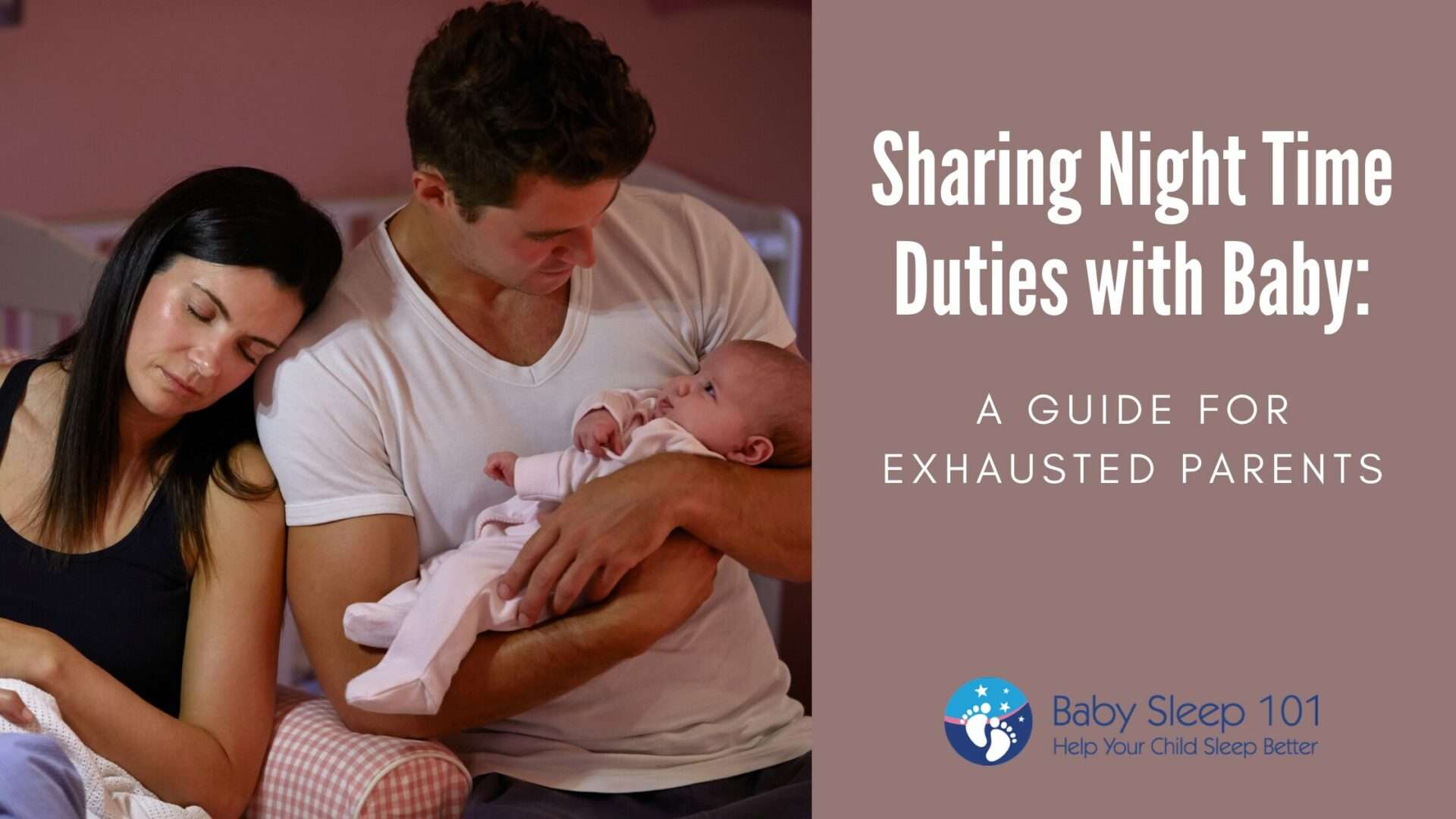

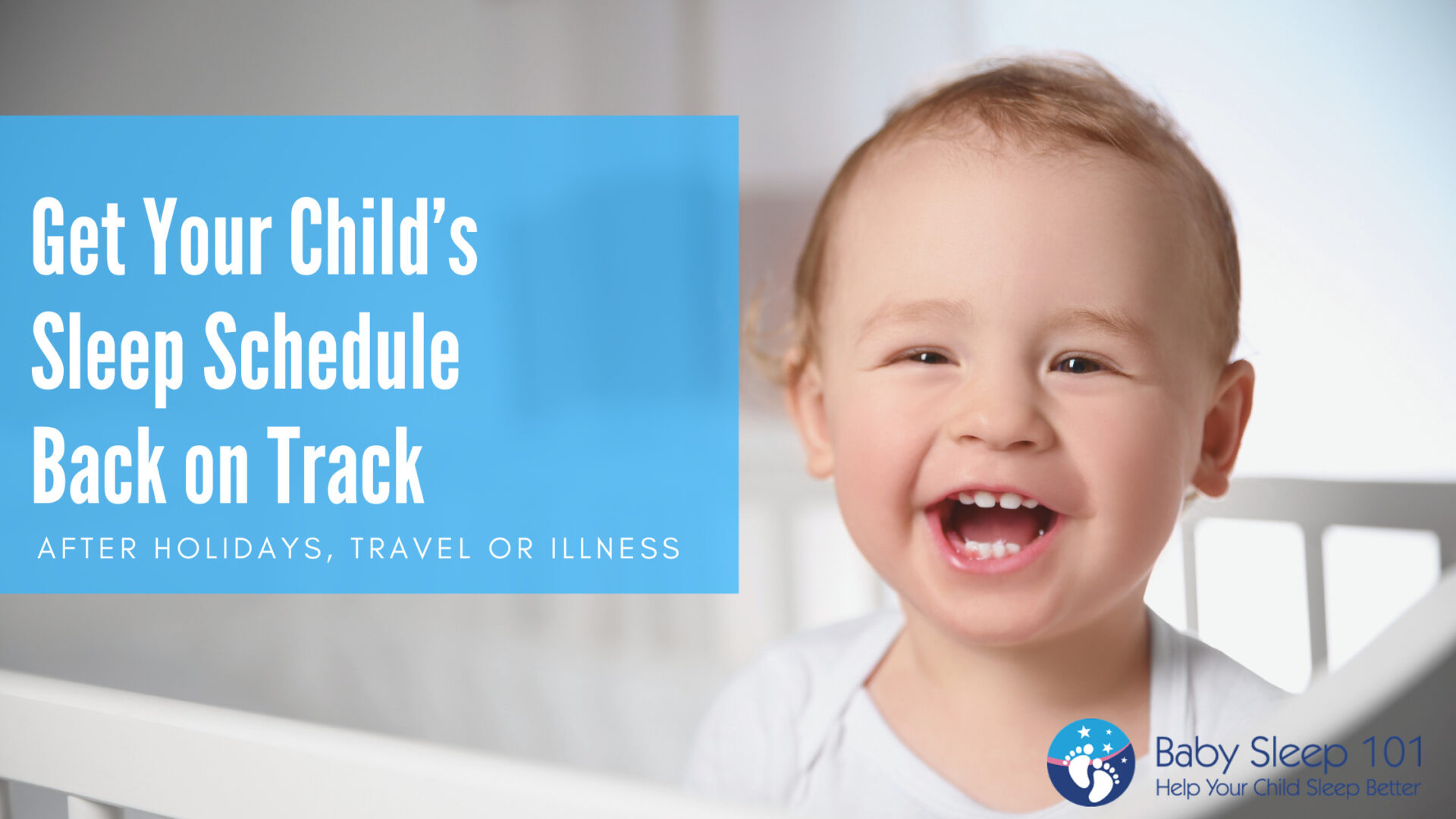



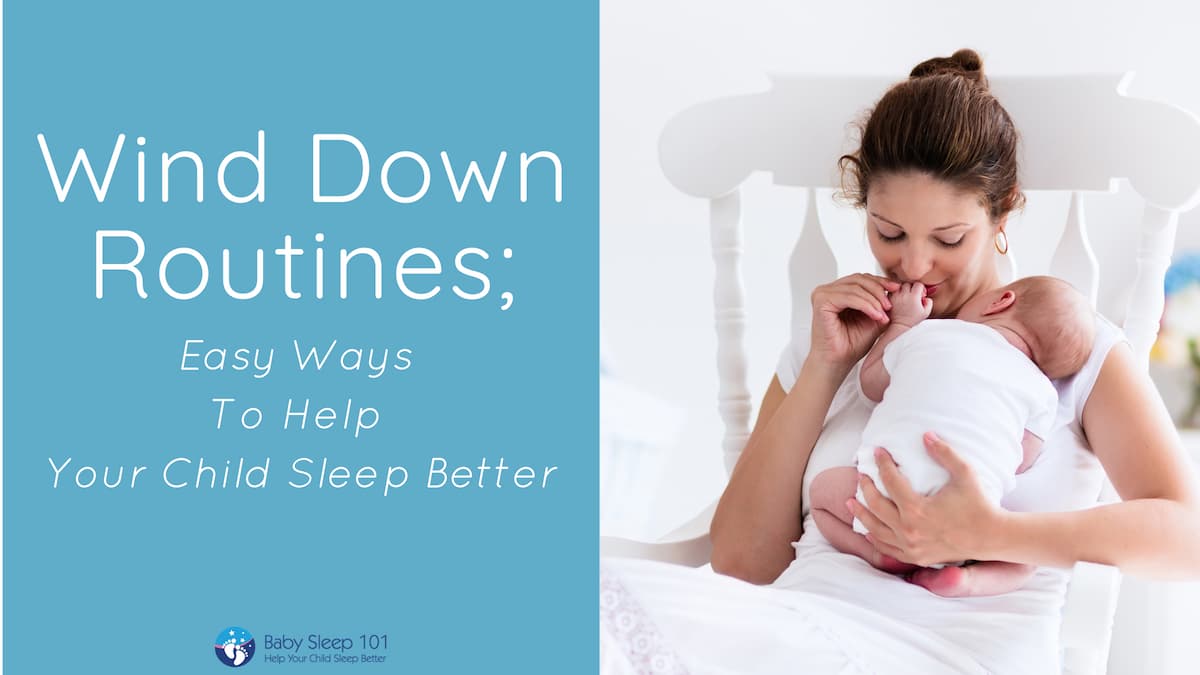

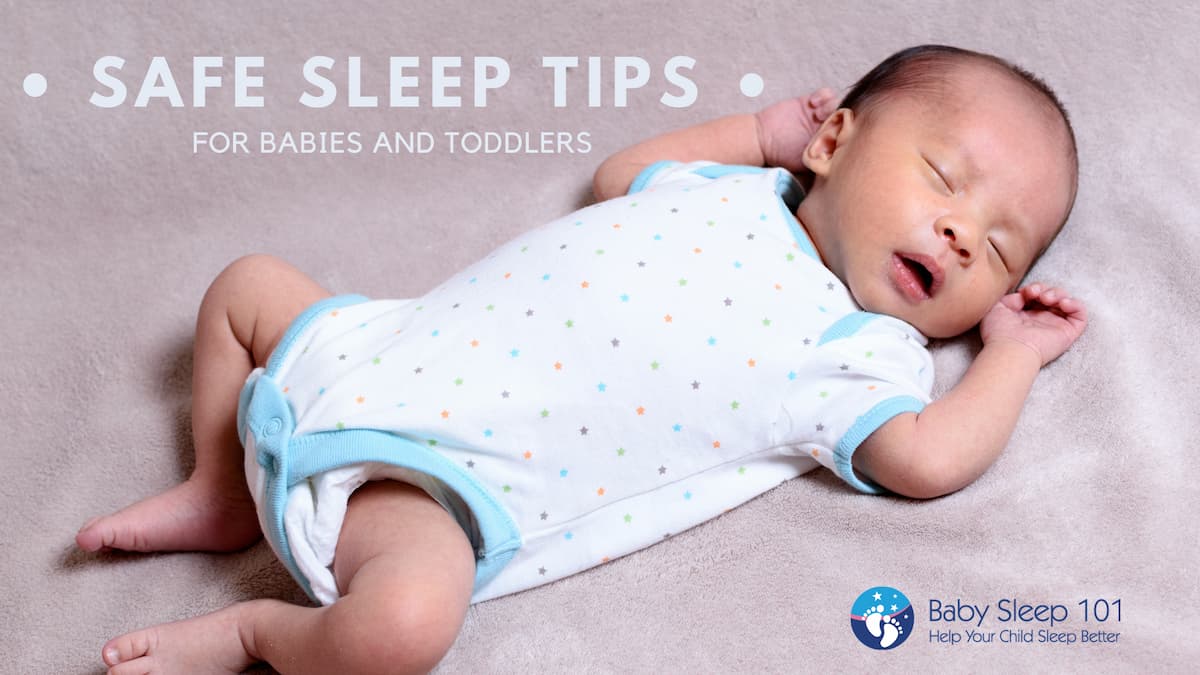
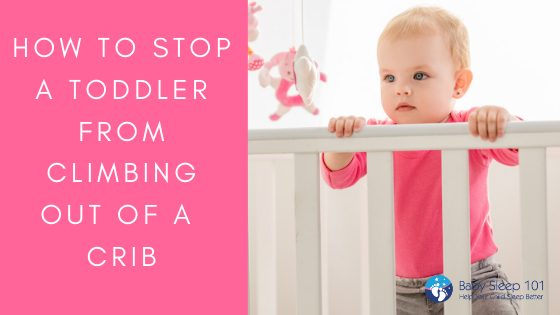

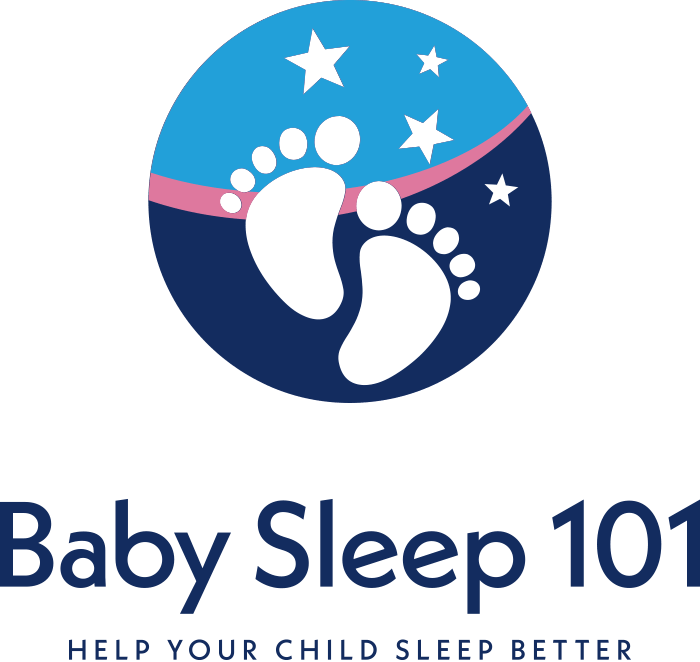
Hi, I was at your sleep seminar. i don’t think these questions are enough for a consult, so I’m hoping you’re willing to answer them here.
1) You said a completely dark room is best even for daytime naps. I was told elsewhere that you differentiate daytime naps from night clearly by continuing to make noise during the day and by not turning the lights out (I still make it dim and I don’t let any light shine directly on the baby). Can you clarify?
2) You’re very firm on early bedtime and strict routine. But if he’s had an especially bad night – double the wake-ups, much harder to put back to sleep, extra crying – is it better to still get him up when he normally gets up or to let him sleep an hour extra to keep his sleep deficit down? Should I just wait for his nap instead?
Hi Lenora
There is nothing you can do to help a newborn get through the day/night confusion faster as it’s due to their immature biological systems and it takes time for the brain to mature. Later on, once their circadian rhythms have developed, these rhythms are influenced by light and darkness. If we want our children to have the best environment for sleeping, especially in the daytime, we want to have dark rooms with minimal lighting to help work with these biological systems.
I am also a big believer in respecting a child’s sleep style. Even as adults, some of us are light sleepers and others can sleep through anything. Babies are no different. So, if you are trying to establish solid naps and daytime routine and/or sleep train, then it makes sense to keep noise down to a minimum while they nap so you aren’t working against yourself, at least in the beginning of establishing a routine.
In regards to whether to let a baby sleep in or not, I would take it on a case-by-case basis. But, if your current routine is all over the place and you’re trying to get it on track, then one way to establish daily consistency is with a regular wake up time. Letting a baby sleep in is fine once in a while, but if their daily wake ups fluctuate over an hour every day, then it’s harder to keep the rest of the day consistent-if that’s your goal.
[…] getting the right amount of naps in the day and that bedtime is early. If you get them on a good routine ahead of the time change, then it will make the transition much easier to deal […]
[…] getting the right amount of naps in the day and that bedtime is early. If you get them on a good routine ahead of the time change, then it will make the transition much easier to deal […]
[…] and are using it consistently. Excellent! The next important step is focus on your child’s daytime routine. Ensure that your child is on a solid routine or about to begin one. That means he or she is […]
[…] and are using it consistently. Excellent! The next important step is focus on your child’s daytime routine. Ensure that your child is on a solid routine or about to begin one. That means he or she is […]
[…] and are using it consistently. Excellent! The next important step is focus on your child’s daytime routine. Ensure that your child is on a solid routine or about to begin one. That means he or she is […]
[…] or as hard as they thought. And remember, you will minimize the amount of crying by following a great sleep routine before sleep […]